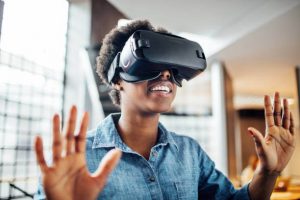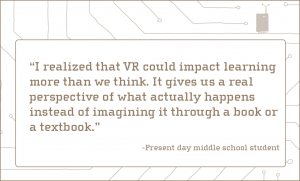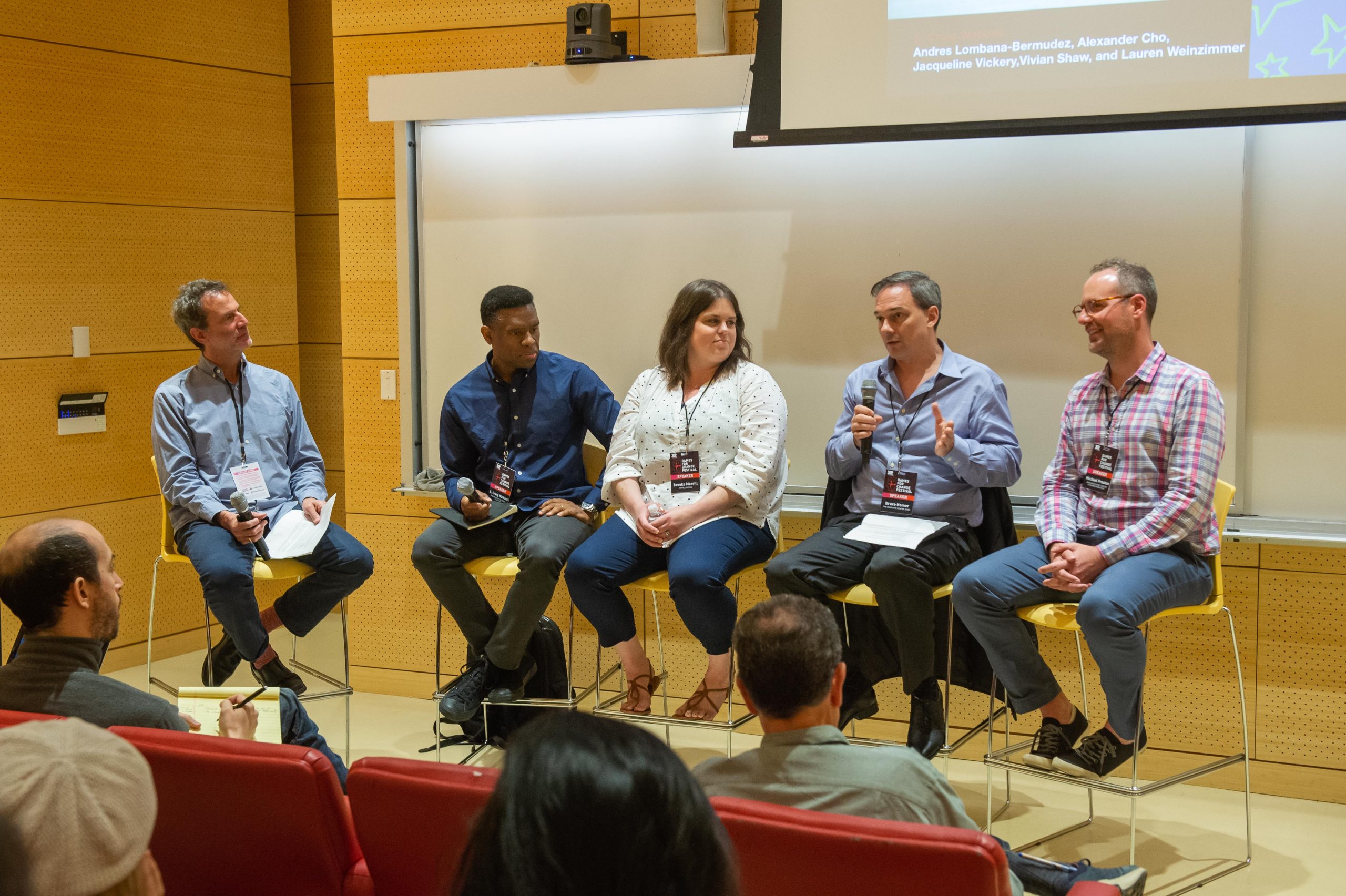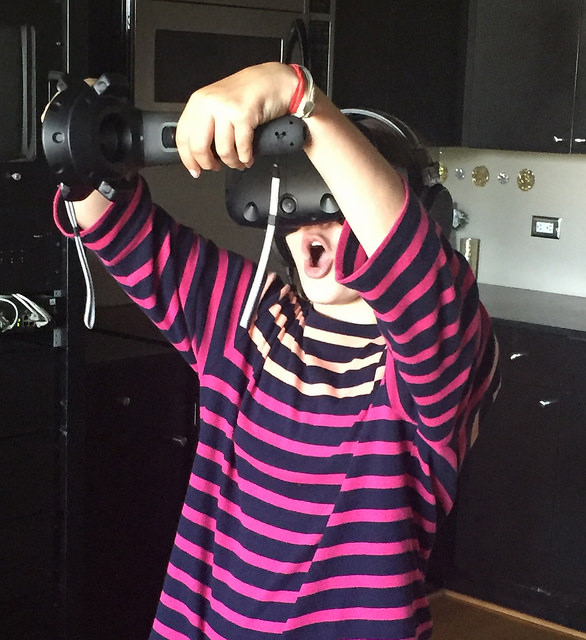Before the Future of Childhood: Immersive Media and Child Development salon took place in November 2018, we invited experts to share their visions about the ways VR and AR might impact childhood 10 years from now. Lisa Castaneda, Co-Founder and CEO of foundry10, shares an optimistic view of VR’s potential to shape learning experiences in the future.

Foundry10 is a research organization working across many domains, and we have been studying VR and students for several years. Today, students see tremendous potential in VR. In our studies they talk about classrooms of the future where learning is enhanced, where the stylized images of UX interfaces they see in movies today, are everyday experiences. As an educator working with teachers, I believe in the next 10 years we will be able to truly capitalize on these immersive technologies for education if we think carefully now.
A temptation in educational technology is to take new tools and use them in familiar ways, adapting old ideas to new machinery. I am hopeful that in a decade, we will think more broadly. “Incorporating advanced technology” into the curriculum will not be AR “textbooks” or traditional quizzes adjusted for VR. Instead, education may reflect a nuanced understanding of how virtual spaces can restructure spatial learning, enable shifts in perspective, refine skills in simulations, and allow an array of learning interactions that aren’t possible now. If we are thoughtful about objectives and content integration, we can engage in ways we could not without those tools, such as being able to witness famous battles and see events first-hand, from multiple perspectives.
 The changes are already beginning, and we are seeing them in courses like high school foreign language. In one foundry10 study, we have foreign language teachers using virtual tasks like walking through a city or solving a virtual scenario as the assessment, asking students to use their language skills in real time rather than on paper. Ideally, in the future, we will better understand how developmental stages intersect with the virtual world on psychological and cognitive levels so we can design simulations and experiences where cognitive load is decreased, and learners can better assimilate information. This would allow seamless integration of tools into lessons such that they extend our ideas about abstract mathematical concepts, the minutia of chemistry, complexities of language, and richness of humanities in ways that resonate and are genuine for learners. Rather than going into VR and coming out to do a traditional assessment, the virtual experience itself will be the assessment.
The changes are already beginning, and we are seeing them in courses like high school foreign language. In one foundry10 study, we have foreign language teachers using virtual tasks like walking through a city or solving a virtual scenario as the assessment, asking students to use their language skills in real time rather than on paper. Ideally, in the future, we will better understand how developmental stages intersect with the virtual world on psychological and cognitive levels so we can design simulations and experiences where cognitive load is decreased, and learners can better assimilate information. This would allow seamless integration of tools into lessons such that they extend our ideas about abstract mathematical concepts, the minutia of chemistry, complexities of language, and richness of humanities in ways that resonate and are genuine for learners. Rather than going into VR and coming out to do a traditional assessment, the virtual experience itself will be the assessment.
Virtual tools, even today, offer a variety of creative devices that enable students to make amazing things. Designing from their imaginations, they can exploit the strengths of those technologies to build, arrange and rearrange in ways that facilitate an iterative process. Our data show that having students create their own content, as artists or engineers, is something they long to do but often don’t quite have the means or interfaces to engage in the ways they believe could one day exist. As designs continue to improve, these creation tools will allow extensions of learning and the chance to prototype easily without breaking learning flow. Educators will continue to develop their own skills—at their own levels and pace— so that they can co-design and craft immersive experiences with students that are meaningful, for both the individual and classroom.
Ten years from now, teachers will also have a much stronger sense of how and when to utilize these tools. They will have data and information about how and when immersive technologies are most effective. Content will be more plentiful across a range of subject areas enabling teachers to think fluidly about how to achieve genuine integration of the content into the classroom.
To make these ideas reality, we must think critically about the role of XR within educational settings today. We need to objectively assess the strengths and challenges that these technologies bring. Instead of just hoping and assuming the tools will help learners, we, as educators, need to gather data, utilize student and teacher feedback, and actively work with developers to take what we know about learning and what they know about virtual spaces to truly enhance education.
 Lisa Castaneda, M.Ed., is a co-founder and the CEO of foundry10, a philanthropic educational research organization, which was created to expand the ways in which people think about learning. Through applied and experimental studies done in collaboration with educators, researchers, and community organizations, our work bridges the gap between research and practice, and provides direct, actionable change in the communities in which we work and beyond.
Lisa Castaneda, M.Ed., is a co-founder and the CEO of foundry10, a philanthropic educational research organization, which was created to expand the ways in which people think about learning. Through applied and experimental studies done in collaboration with educators, researchers, and community organizations, our work bridges the gap between research and practice, and provides direct, actionable change in the communities in which we work and beyond.




